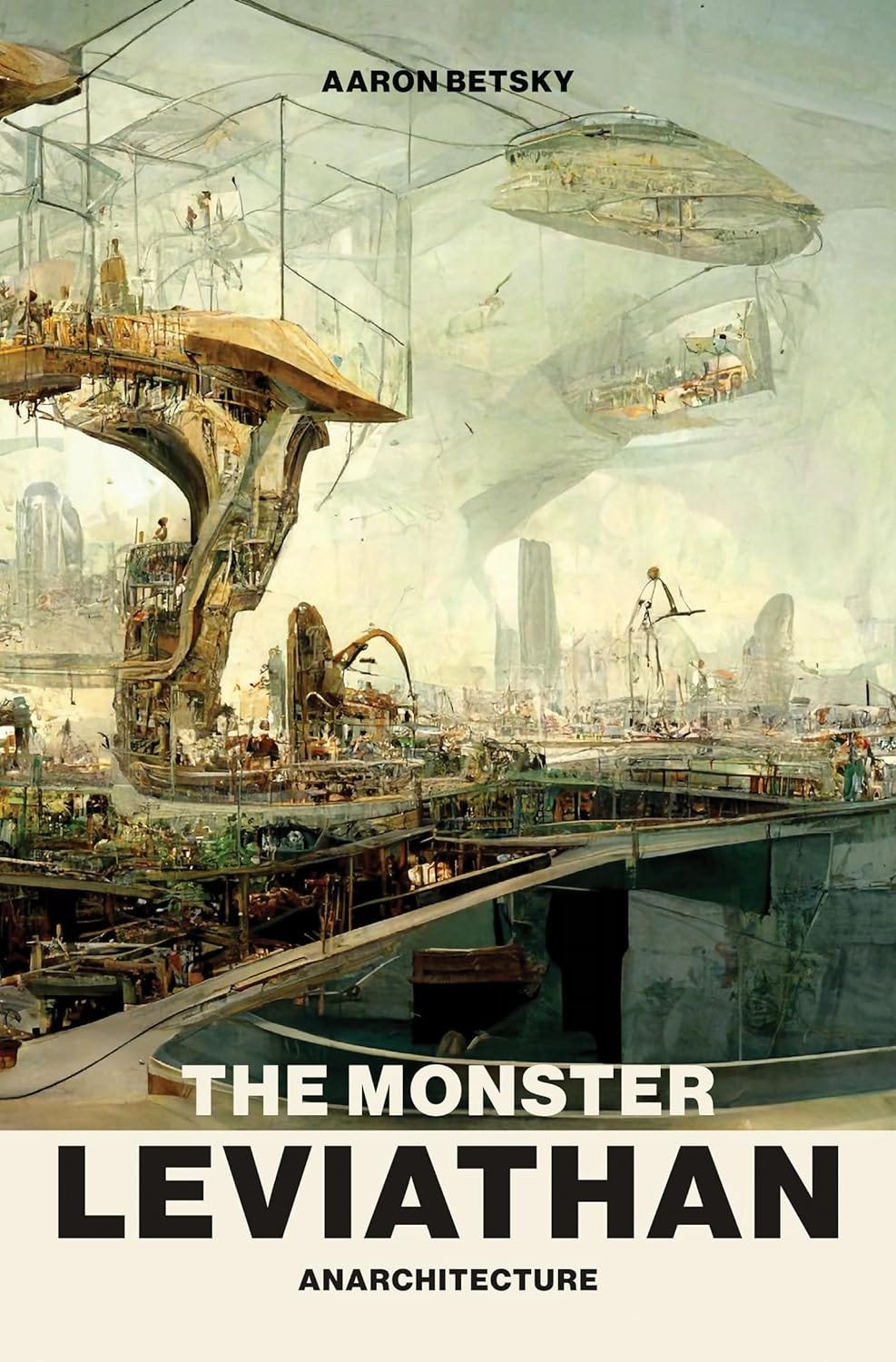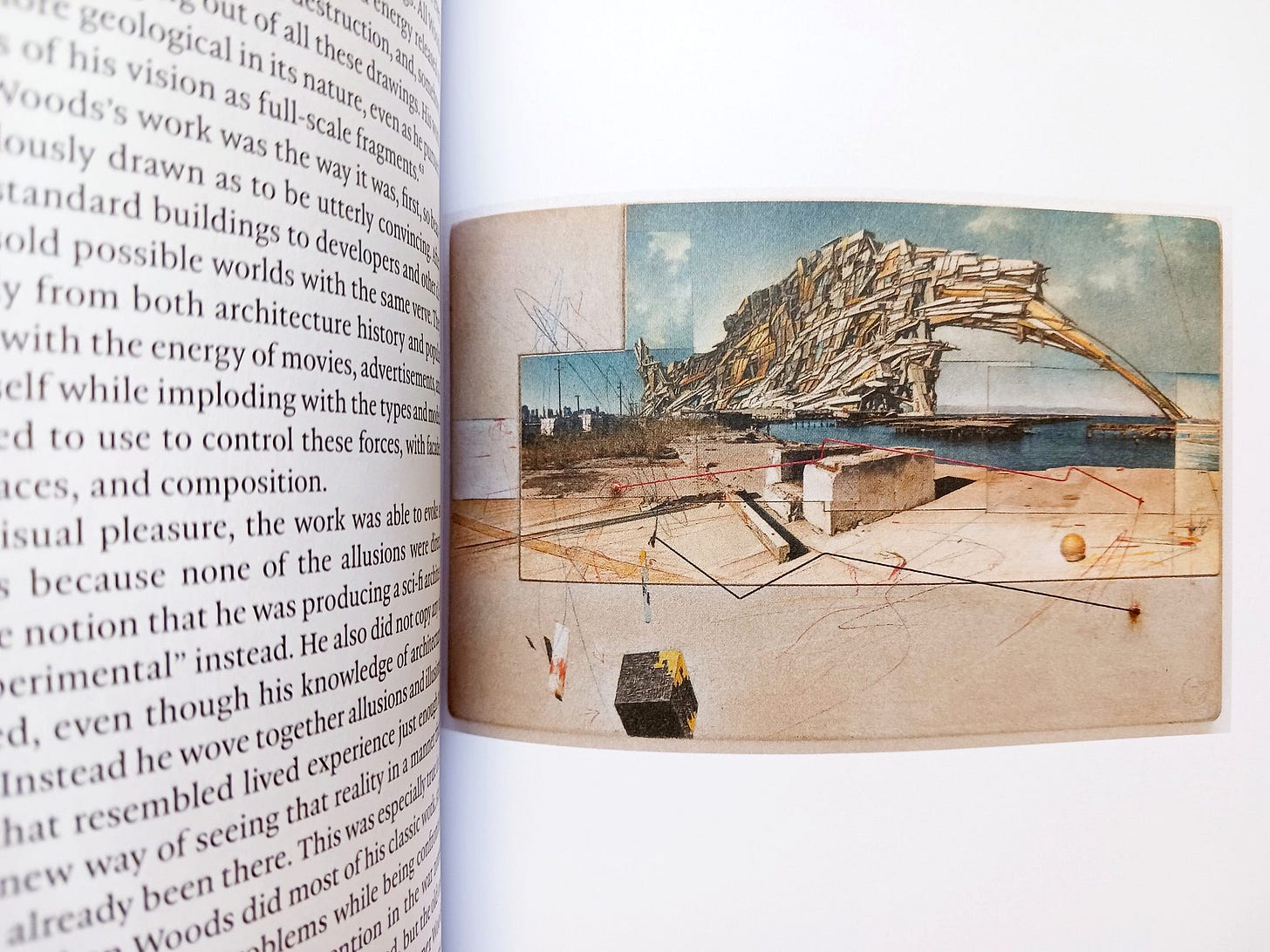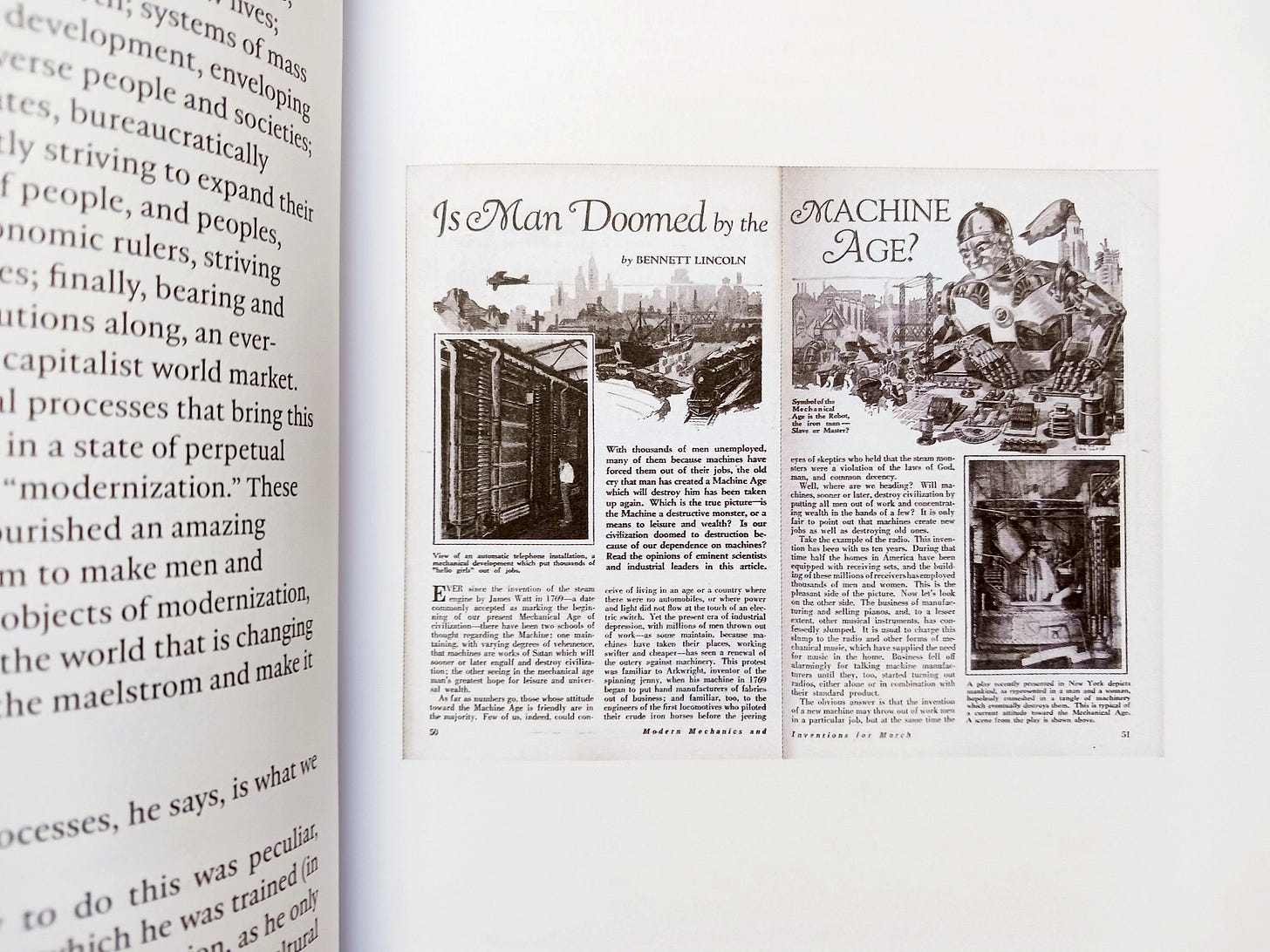This newsletter features new and old books by Aaron Betsky, a selection of books released this week in the US, some headlines, and a BIG book from the archive.
Book of the Week:
The Monster Leviathan: Anarchitecture by Aaron Betsky, published by The MIT Press (Buy from Amazon / Bookshop)
Even before the Anarchitecture group show was held in a gallery at 112 Greene Street in New York in 1974, the phrase “anarchitecture” was in some use. Four years earlier, Robin Evans wrote “Towards Anarchitecture” for Architectural Association Quarterly, and in it he cites an even earlier publication by Peter Cook titled Anarchitecture: Action and Plan, from 1967. Even though Evans provides some cursory definitions of the term (“non-architecture” or “the tectonics of non-control”), the term anarchitecture is typically associated with Gordon Matta-Clark, who was one of the artists in the group show and evidently created art aligned with the term across his short career, whether we know his definition of it or not. (The architecturally trained artists’s involvement in the Anarchitecture show was explored by Mark Wigley in Cutting Matta-Clark.) So, when Aaron Betsky puts Anarchitecture in the subtitle of his latest book, released last month, it’s hard not to jump to Matta-Clark in one’s mind, especially given that early in his book Betsky references both Matta-Clark and Lebbeus Woods, who published Anarchitecture: Architecture Is a Political Act in 1992. Betsky, like Evans, gives readers some terse definitions of the term: “another architecture, a possible architecture, and even an anarchist architecture that will continually break down the power of utopia and dystopia and free us to build a better world.”
If anarchitecture is a term loaded with some tangible references for architects, what about “monster leviathan”? A clue can be deciphered in who wrote the book, since Betsky has served numerous roles in many institutions across his career but recently spent five years at the helm of the Frank Lloyd Wright School of Architecture (now The School of Architecture). His years at Taliesin West must have been impactful, at the very least given that in 2021, one year after he departed for Virginia Tech, he co-wrote 50 Lessons to Learn from Frank Lloyd Wright. The monster leviathan, it turns out, is Wrightian: “There beneath, grown up in a night, is the monster leviathan,” Wright wrote in “The Art and Craft of the Machine,” the transcription and reworking of a 1901 lecture that Betsky quotes in his book’s first chapter, “ten thousand acres of cellular tissue, layer upon layer, the city’s flesh, outspreads enmeshed by intricate network of veins and arteries, radiating into the gloom […] the ceaseless beat of the activity to whose necessities it all conforms.” The monster leviathan, it seems, is a hybrid conurbation of nature, humanity, and technology, constantly evolving, mutating, as relevant a metaphor now as when Wright spoke the words. But the contemporary world needs utopian visions as much as dystopian ones, but not something like Wright’s Broadacre City that spreads itself thinly across the landscape. The pairing of “monster leviathan” and “anarchitecture” seems to say that business-as-usual architecture is hardly the ideal way of intervening in cities that are more alive than controllable, much less understandable.
The journey from Wright to the types of interventions Betsky proposes at the end of the book is dense but readable, delving into the buildings, books, and theories of architects, artists, and philosophers who will be familiar to anyone who has been paying attention to architectural theory over the last 35 years. In addition to Wright, Matta-Clark, and Woods, we find Walter Benjamin, Martin Heidegger, Constant Nieuwenhuys, Archigram, Aldo Rossi, Peter Eisenman, Robert Venturi, John Hejduk, Bernard Tschumi, Zaha Hadid, Rem Koolhaas, Lars Lerup … the list goes on and on. As such, and given the numerous passages quoted at length throughout it, The Monster Leviathan should function well as a textbook for a theory seminar in architecture school. Yet I’m most intrigued by Betsky’s conclusions, which (spoiler alert) argue for “reuse, upcycling, rehabilitation, preservation, and reimagination of what we already have” rather than more and more new construction. In the face of climate change and finite resources, this is the most logical way forward; it is the most anarchitectural type of architecture imaginable, outside of doing nothing at all, but it is also very unrealistic, given how architecture has been commodified as part of capitalism. I would have liked more exploration of this idea, but given the length of the text and the number of words required to get to the last chapter, where Betsky just briefly articulates what he describes as a practical and theoretical proposal, there is very little room to do so. Who knows, maybe Betsky’s next book will take a stab at an (an)architecture of reuse and rehabilitation? If not, those interested just have to wait for Charlotte Malterre-Barthes' A Moratorium on New Construction to be released later this year.
Books Released This Week:
(In the United States, a curated list)
Fundamentals of Planning Cities for Healthy Living by Avi Friedman and Alexandra Pollock, published by Anthem Press (Buy from Amazon / Bookshop) — In their book focused on creating healthier neighborhoods, Friedman and Pollock (a professor at, and graduate from, McGill University, respectively) aim “to offer information on contemporary community design concepts and illustrate them with outstanding international examples.”
Green Facades by Nicole Pfoser, published by DETAIL (Buy from Amazon / Bookshop) — It seems the appeal of green facades has been strong since the completion of the Musée du quai Branly by Jean Nouvel and Patrick Blanc in 2004, amplified in recent years by Stefano Boeri’s Bosco Verticale. This new book provides some background on technical considerations for various types of green facades and presents a half-dozen European case studies.
On the Appearance of the World: A Future for Aesthetics in Architecture by Mark Foster Gage, published by University of Minnesota Press (Buy from Amazon / Bookshop) — Architect Mark Foster Gage contributes to the Forerunners series, which is made up of “short books of thought-in-process scholarship, where intense analysis, questioning, and speculation take the lead,” asking why our cities are getting uglier.
Postindustrial DIY: Recovering American Rust Belt Icons by Daniel Campo, published by Fordham University Press (Buy from Amazon / Bookshop) — The latest by Daniel Campo, author of The Accidental Playground: Brooklyn Waterfront Narratives of the Undesigned and Unplanned, tells the stories of do-it-yourself actors saving industrial infrastructure in Detroit, Pittsburgh, Buffalo, and other Rust Belt cities.
Full disclosure: As an Amazon Associate, AbeBooks Affiliate, and Bookshop.org Affiliate, I earn commissions from qualifying purchases made via any relevant links above and below.
Book News:
Read a review of Brittany Utting's Architectures of Care: From the Intimate to the Common at Architect's Newspaper, where Paul Mosley says the essays "develop an ethics of care that challenges its conventional definitions within architectural practice."
David Neustein, of Other Architects, reviews Heidi Dokulil's Sydney Brutalism at the Sydney Morning Herald, saying it is a “great value as a compendium of 20th-century architects and architecture.”
Metropolis compiles “8 Books to Add to Your Winter Reading List,” one of which is The Monster Leviathan.
From the Archives:
On this week in 2015 I reviewed BIG. HOT TO COLD. An Odyssey of Architectural Adaptation, the second monograph on/by Bjarke Ingles Group and a companion to an exhibition of the same name at the National Building Museum in Washington, DC. I wrote in my review of the book: “Through a combination of striking form-making justified through diagrams, an omnipresence in various media, and a design approach that finds a unique twist in the given circumstances (climate, built context, economics, etc.), BIG's brand of architecture has taken off to just about every bit of land on the globe” — from hot climates to cold climates, as the wraparound cover image and book structure amplify.
Apropos of this week’s “Book of the Week,” it’s worth drawing attention to Aaron Betsky’s 1990 book Violated Perfection: Architecture and the Fragmentation of the Modern, a critical survey of what was alternately called deconstruction and deconstructivist architecture at the time. Although Betsky, with Paul Florian and Stephen Wierzbowski — the two architects contribute “a violation” to the book — came up with the idea of Violated Perfection in 1986, the book didn’t arrive until two years after MoMA’s Deconstructivist Architecture exhibition and book. Joseph Giovannini’s Architecture Unbound goes into some detail on the timeline of the various players taking stock of contemporary architecture in those years, but clearly Betsky was an early proponent of the fragmented forms being created by Coop Himmelb(l)au, Daniel Libeskind, Zaha Hadid, Bernard Tschumi, and other now-famous and forgotten names. Violated Perfection is more image than text, almost the antithesis of The Monster Leviathan, but both books tread similar territories, decades apart.
Thank you for subscribing to A Weekly Dose of Architecture Books. If you have any comments or questions, or if you have your own book that you want to see in this newsletter, please respond to this email, or comment below if you’re reading this online. All content is freely available, but paid subscriptions that enable this newsletter to continue are welcome — thank you!
— John Hill









